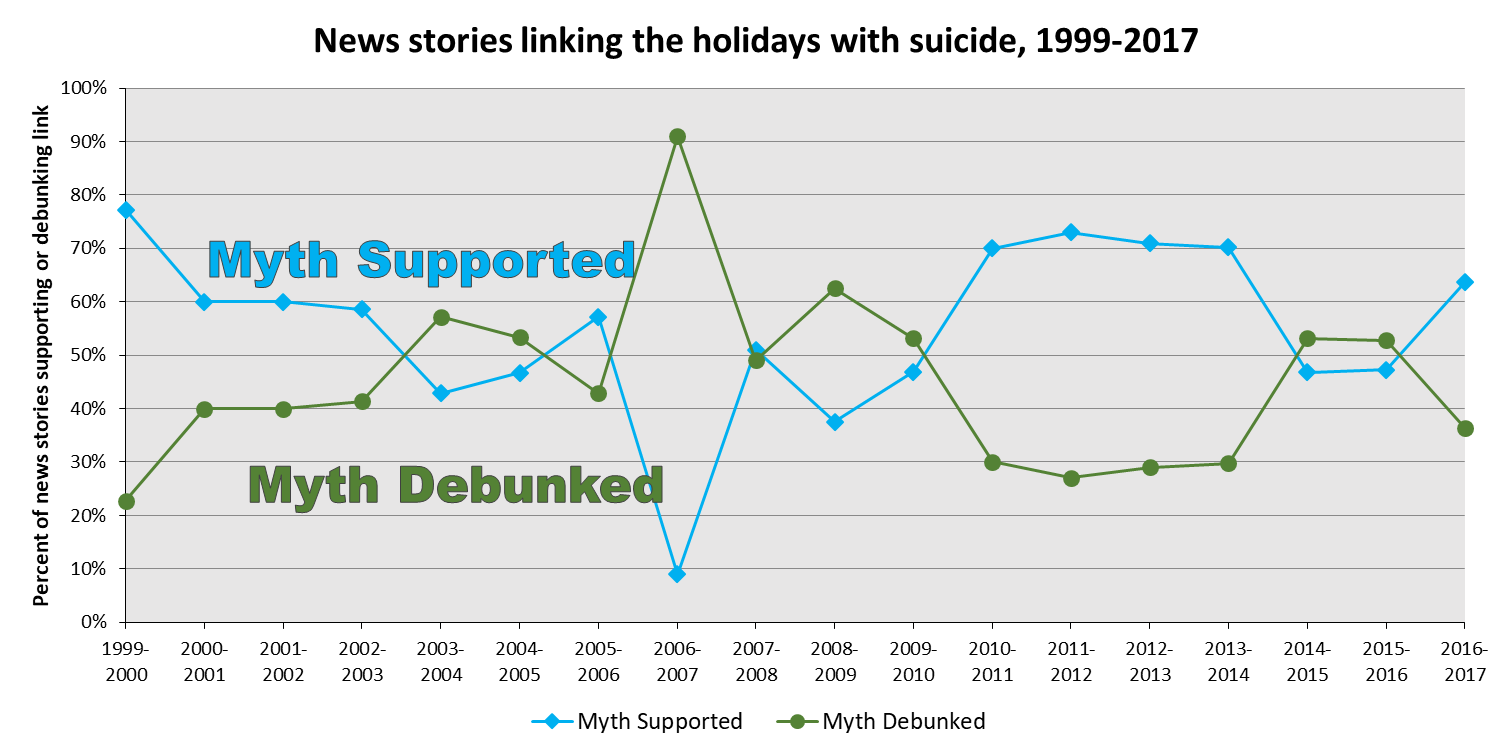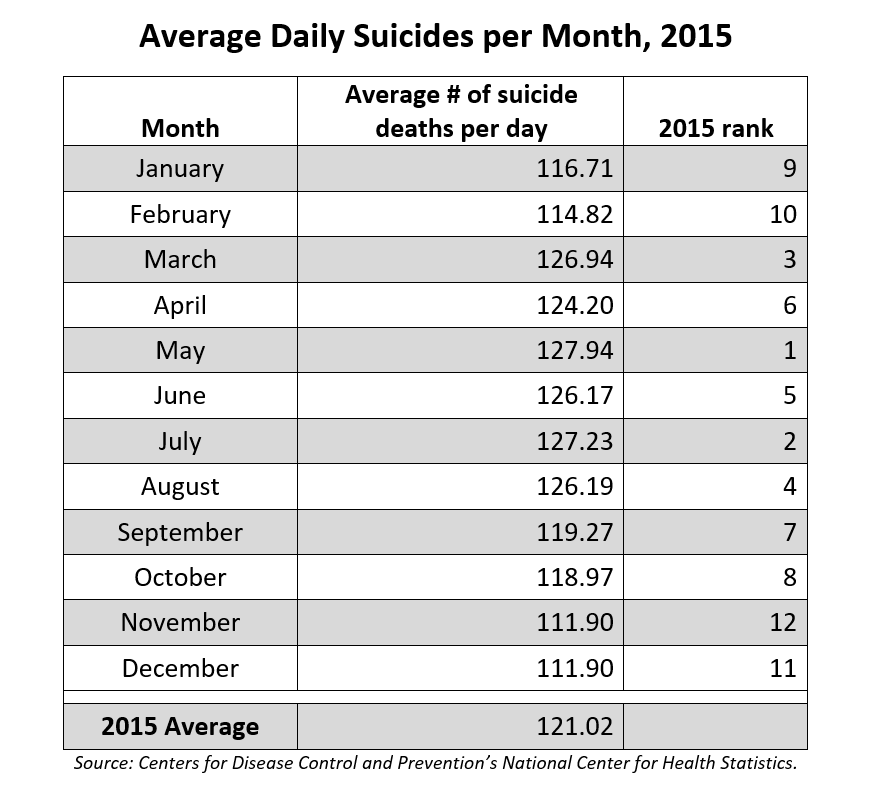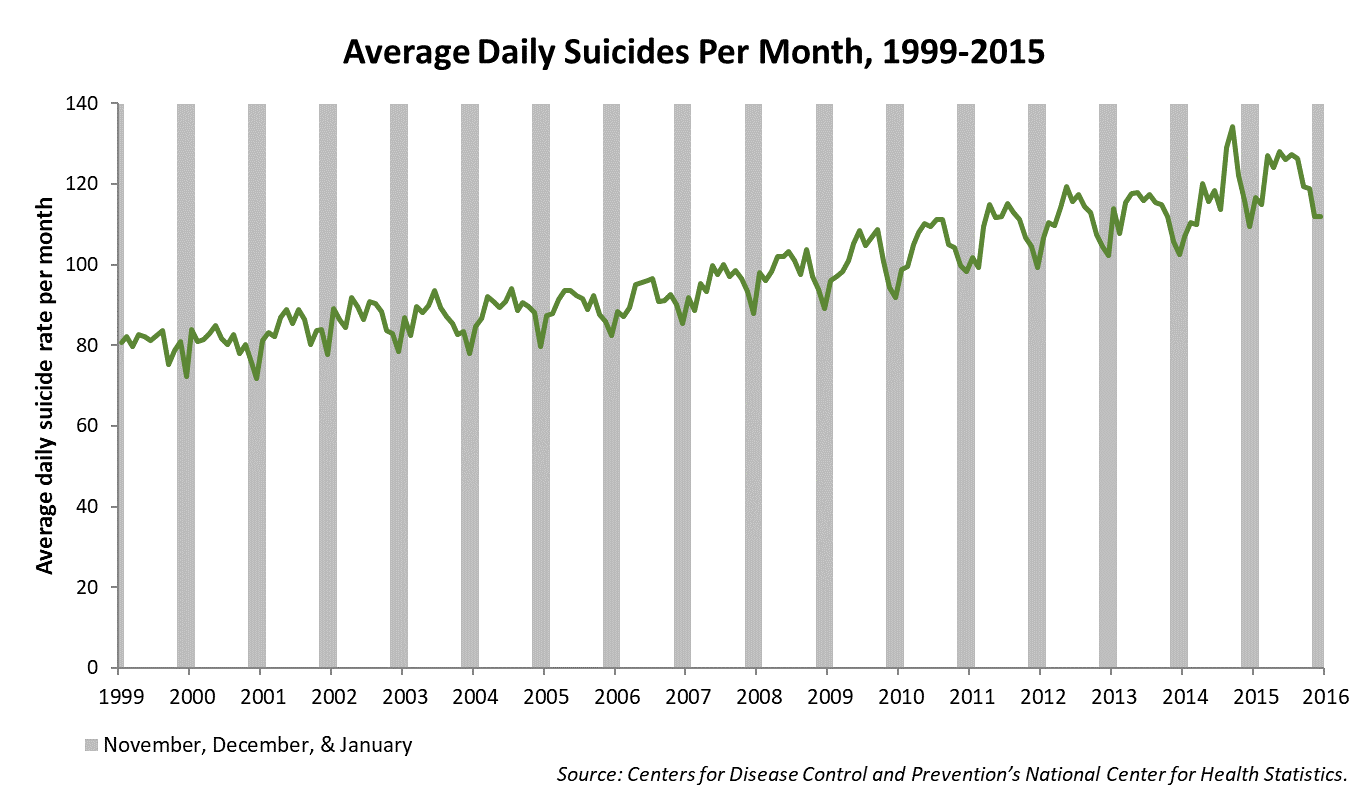Nearly two-thirds of the newspaper stories linking the holidays and suicide over the 2016-17 holiday season supported a false connection between the two, the Annenberg Public Policy Center has found.
The annual analysis of newspaper stories in the Nexis database from the holiday season found that 64 percent of the stories on the topic last year recycled the myth that the suicide rate rises during the holidays, as compared with 36 percent that debunked it (see Figure 1).

“It’s disappointing to see that this myth hasn’t gone away,” said Dan Romer, research director of the Annenberg Public Policy Center (APPC) of the University of Pennsylvania. “After two years in which debunking stories dominated, we’ve seen a comeback in misinformation about the holiday-suicide myth.”
The holiday months usually have some of the lowest suicide rates. According to new information from the Centers for Disease Control and Prevention (CDC), in 2015 November and December were the two lowest months (12th and 11th, respectively) in average suicide deaths per day, and January was ninth. The average daily rates often peak in the spring and summer months. In 2015, the most recent year available, the months with the highest average daily suicide rates were May, July and March (see Table 1 and Figure 2).
APPC has tracked news coverage on this issue for 18 years, starting in 1999. In only two of those years have more than 60 percent of stories debunked the myth. In most of those years there have been more newspaper stories supporting the myth than debunking it.
The myth often goes uncorrected
The current analysis, from mid-November 2016 through January 2017, found that 12 stories debunked the holiday-suicide myth and 21 supported it. Some stories that repeated the myth contained unsupported claims, quotes or speculation that went unchallenged.

For instance, an Associated Press interview with rapper The-Dream, which ran in the Worcester (Mass.) Sunday Telegram, quoted him as saying: “This isn’t a good time of year for anyone who has lost someone. I lost my mom on the 23rd of December in 1992. Her birthday is on December 1st. That’s why people commit suicide around Thanksgiving and Christmas, because that’s the time when families come together…”
A Philadelphia Tribune article quotes a man portraying Santa Claus at a Christmas Village: “I use Community Claus as a way to meet people [and] reach people because around this time of year suicides are up, people are lonely…”
Although the analysis did not include online-only news sources, online stories obtained through Google searches from the same time period using the same search terms found a similar pattern of stories upholding and debunking the holiday-suicide myth.
“Feature writers and columnists as well as news reporters may mean well when they cite the suicide myth,” Romer said. “But it actually doesn’t help those who may be experiencing suicidal thoughts to tell them that this is the time of year that others are taking their lives. Research has shown that this kind of information can be harmful, and recommendations for reporting on suicide specifically argue against citing trends in suicide that are unsubstantiated or false.”

Recommendations for media coverage of suicide (see http://www.reportingonsuicide.org) note that reporters should consult reliable sources on suicide rates, such as those produced by the CDC, and provide information about resources that can be helpful to people in need.
Other resources include the Suicide Prevention Resource Center (www.sprc.org), and the CDC (http://www.cdc.gov/ViolencePrevention/suicide/holiday.html). The U.S. Surgeon General’s strategy for the prevention of suicide encourages more accurate reporting on the causes (http://www.samhsa.gov/prevention/suicide.aspx). The U.S. National Suicide Prevention Lifeline can be reached at 800-273-TALK (8255).
Methodology
News and feature stories linking suicide with the holidays were identified through the Nexis database, with “suicide” and “Thanksgiving/Christmas/New Years” or “holidays” as search terms from November 15, 2016, through January 31, 2017. Researchers evaluated whether the stories supported the link, debunked it, or showed a coincidental link. Only domestic suicides were counted; overseas suicide bombings, for example, were excluded.
Thanks go to Ilana Weitz, who collected and supervised the coding of the stories, to Sebastián Lemus-Camacho and Jaléssa Mungin for assistance in coding, and to Emily Maroni for assistance in charting the data. Thanks also go to Alex Crosby and colleagues at the CDC for assistance again in providing monthly rates of suicide in the United States.
To download the news release and figures, click here.

